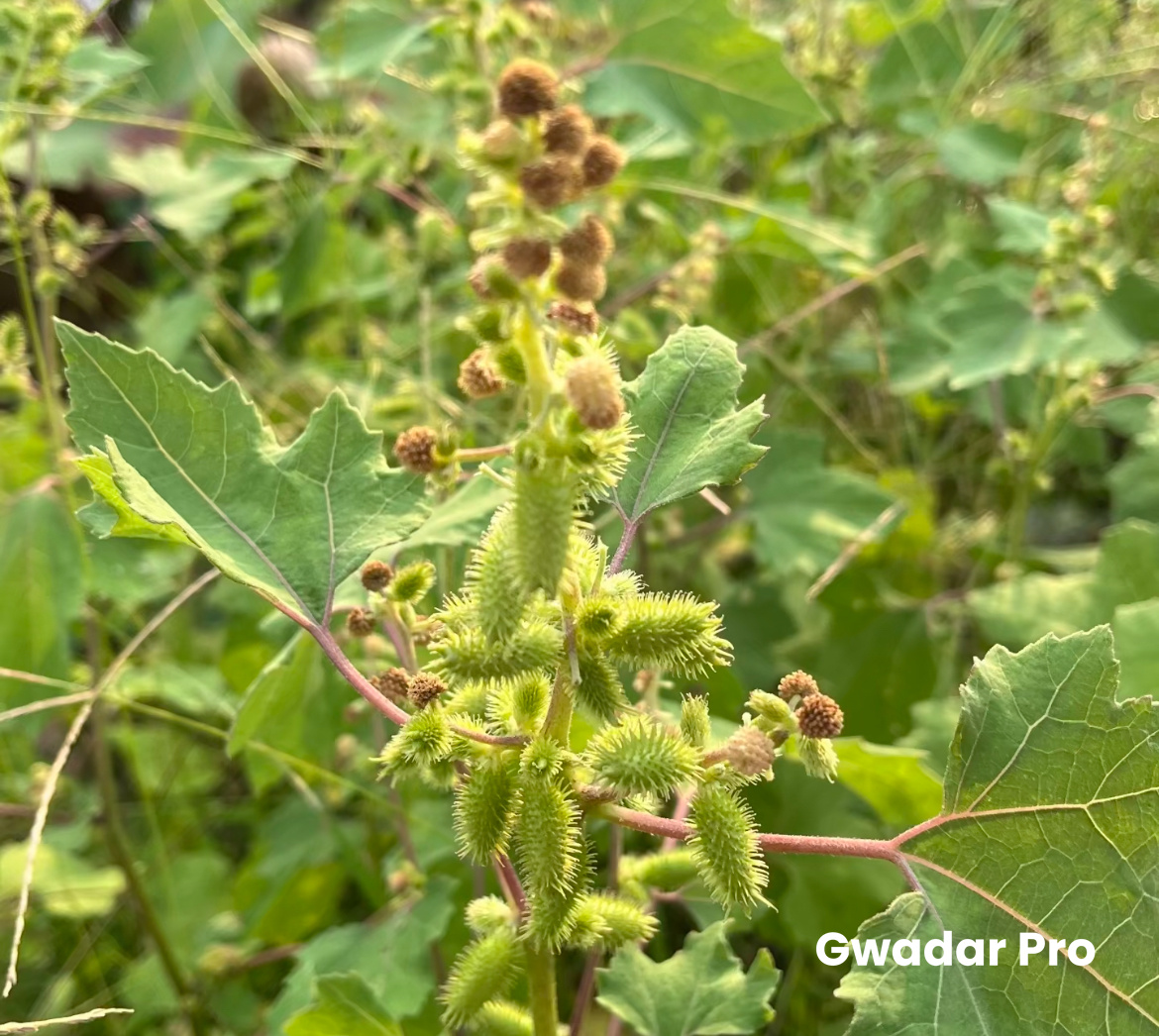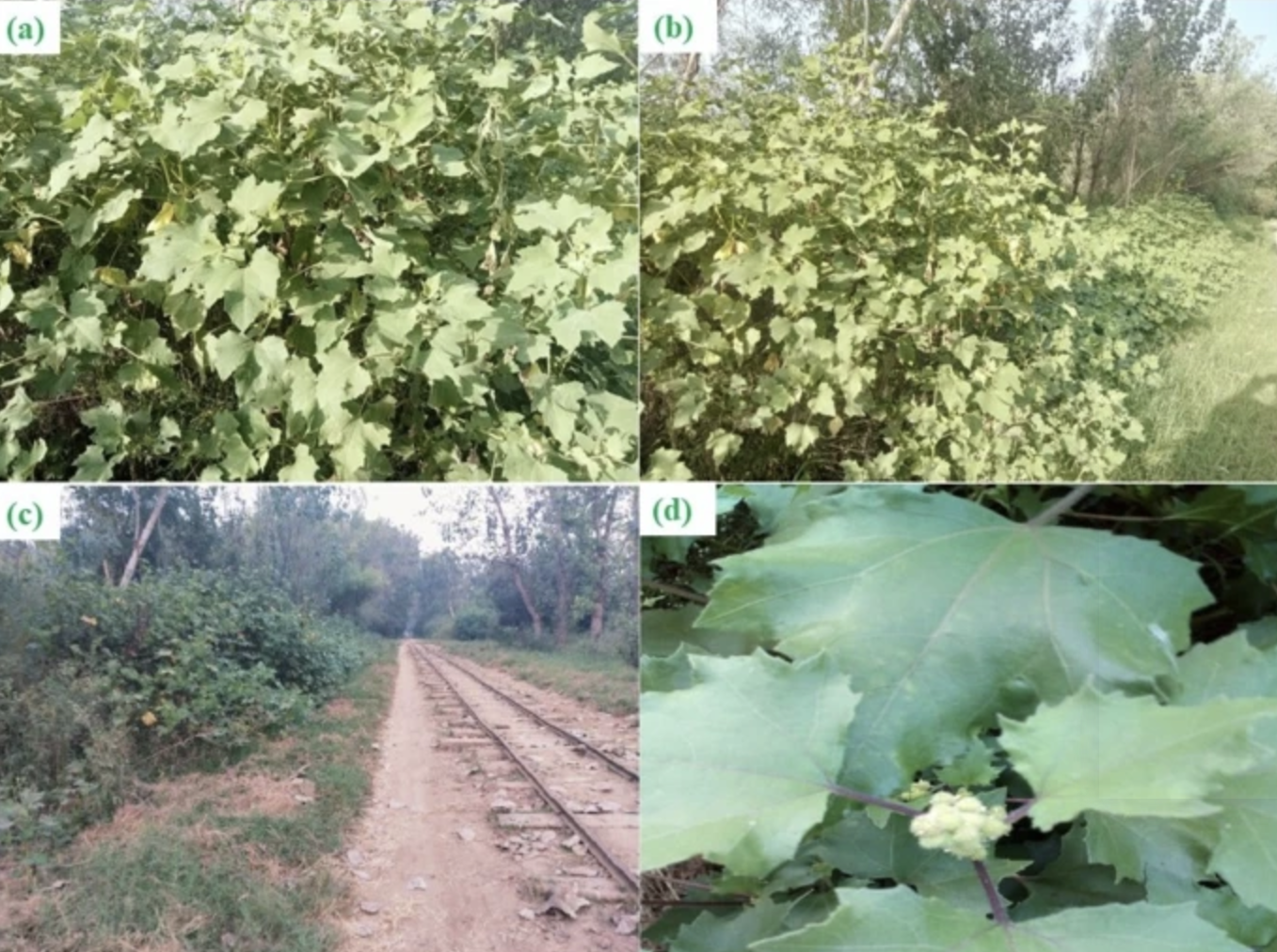Invasive species cocklebur in Pakistan could be turned into a treasure: Chinese expert
BEIJING, Nov. 22 (Gwadar Pro)–What do you think of when mentioning cockleburs? For most people, it may just be a small “gift” that gets caught on clothes or the body from time-to-time when they are outing in the wild, sometimes causing a sting, but more often it is harmless.

Cockleburs is widely distributed worldwide [Photo/GP]
However, as an invasive plant native to the Americas, cockleburs has spread around the globe far and wide, threatening agriculture, the stability of ecosystems and biodiversity. In Pakistan in particular, this plant has spread rapidly since it was introduced in the early 1980s, especially in agricultural areas such as Punjab and Khyber Pakhtunkhwa, where it has become an important factor affecting the growth of local crops and ecological balance. The research results of this harmful species, jointly completed by Pakistani researchers including Muhammad Waheed, Department of Botany, University of Okara, have just been published in the journal BMC Ecology and Evolution.
“From 2020 to 2022, our team conducted extensive field surveys in Punjab and other places to record the distribution of cockleburs, and combined with public data from the Global Biodiversity Information Facility (GBIF), a total of 82 distribution records were collected. After screening of these data, a species distribution model (SDM) was constructed. The results showed that cockleburs have now invaded about 21% of Pakistan’s land, especially in the central and northeastern regions, where are most likely to become the hardest hit areas for its future spread due to suitable climatic conditions,” said Muhammad Waheed.

Invasion of cockleburs on agricultural land and railway track in Pakistan
[Photo/Muhammad Waheed]
Currently, it is considered one of the most problematic and widespread weeds in Pakistan. The researchers also pointed out that the distribution of cockleburs is affected by factors including seasonal temperature changes, the average temperature of the wettest season, and the total nitrogen content of the soil. The study shows that in the context of climate change, most parts of Pakistan, except Sindh Province, may be further invaded by it. This spreading trend poses a major threat to cash crops including but not limited to corn, soybeans, and cotton.
“Our predictive model predicts that the suitable habitat for cockleburs will expand under future climate scenarios, which could lead to a loss of biodiversity and a decline in native vegetation.” In this regard, Muhammad Waheed stressed that researchers, policymakers, resource managers and stakeholders need to work together to develop effective strategies to stop the spread of this invasive species.
On the plight caused by cockleburs in Pakistan, Professor Yuan Guobao, chairman of the Hubei Technical Market Association, who has visited Pakistan more than 30 times and has a deep understanding of the local climate, soil and hydrological conditions, expressed his view to Gwadar Pro. “Cockleburs has not caused much harm in China, and is generally eradicated with ordinary herbicides. However, considering the fact that its thorny fruits are easily spread, perhaps we can change our thinking and use the method of ‘turning waste into treasure’ to deal with it.”
“In Pakistan, cockleburs are a hazard. But the toxicity of its seeds could be used as a natural insecticide, which is effective against cotton aphids and red spider mites. In addition, in China, it is also a traditional Chinese medicine, which has the effects of treating the cold, clearing the nasal passages, relieving pain, and removing rheumatism, and has a good effect on rheumatoid arthritis.” Yuan introduced that picking mature cocklebur seeds, and air-drying them to export to China for use as medicinal materials could be a way to have the best of both worlds.
“In addition to increasing income for local farmers, this approach is also more eco-friendly than simply using harmful herbicides. For all invasive plants, including animals, the first thing to do is to block their influx, such as strengthening border quarantine. If harmful species have already spread to the country and caused harm, we need to use a variety of methods, including photochemical and ecological methods, trying to find out their value and turn waste into treasure,” Prof Yuan told the reporter.




